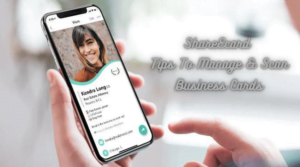Businesses today must remain connected in an ever-evolving digital landscape, which necessitates finding effective yet cost-effective means of staying in contact.
Softphones are useful in this scenario, You may learn all there is to know about these adaptable instruments that are changing the way we communicate by reading A Beginner’s Guide To Softphones.
What Is a Softphone?
A VoIP phone that is software-based and operates on a computer or mobile device is called a softphone. Without specialized hardware, it enables you to place and receive phone calls over the Internet.
Softphones are a popular option for companies and individuals who need to be able to make and receive calls from anywhere or who wish to cut costs on their phone bills.
The Advancement Of Softphones
Softphones have evolved rapidly since their first introduction. Softphones have several benefits that, even to seasoned telecom professionals, could come as a surprise, ranging from straightforward communication tools to feature-rich applications. You’ll be able to appreciate what they have to offer today if you know their past.
Important Softphone Features
Softphones are incredibly versatile and are a necessity for contemporary communication. Let’s examine a few of the more notable ones:
- Enjoy the same crystal-clear voice quality as on standard phones with HD Audio.
- Face-to-face meetings can be held from anywhere with video conferencing.
- Easily communicate with clients and coworkers with Instant messaging.
- Record calls to preserve key talks.
- For more efficient operations, integrate with other business tools.
Benefits Of Softphones
There are a few essential VoIP features to take into account when assessing possible business communications providers in order to enhance distant communications.
Similarly, softphones have a number of benefits, particularly since business owners want adaptable, trustworthy phone system solutions that allow their staff to be reached by phone at all times, no matter where they are.
1. Having The Freedom To Work Anywhere In The World
A desktop softphone allows users to make and receive calls from any computer with an internet connection.
Whether they’re in a coffee shop, airport lounge, or cabana by the pool, this enables employees to stay in touch when away from the office.
Additionally, it reduces hardware costs because customers don’t need a desk phone for the highest call quality—just a headset.
2. Transcription And Call Recording
Administrators have the option to automatically or manually (on-demand) record audio or video calls and share the recordings with other team members.
Searchable and editable transcripts of recordings include details regarding customer service standards, support quality, agent performance, and more. Learn about the call recording laws in your state to avoid any legal issues.
3. Save Money
Deskphone systems can be highly expensive to install, costing up to several thousand pounds per seat, and they require regular maintenance. On the other hand, installing a softphone merely requires a few minutes and no additional equipment.
Because of the efficiency gains it delivers, a well-implemented softphone system can also produce some outstanding returns on investment. When companies switch to softphones, they can save up to 45% on costs!
4. Save Time
Softphones are quicker and simpler to set up and use. A softphone eliminates the need for the time-consuming installation procedure for individual deskphones.
They don’t require any downtime, the assistance of IT professionals, or even the installation of any software. To place calls, just log in on your softphone provider’s website or mobile application.
5. Simple Integrations And Telephonic Call Forwarding
The significance of integrations is likewise rising. Due to the capacity of many softphones, for example, to integrate with systems for customer relationship management (CRM), every call is routed to the right contact in your system.
Call forwarding automatically routes unanswered calls to multiple phone numbers in a predetermined order without terminating the original call.
Calls can be forwarded, for instance, from a desk phone to a personal mobile phone, a cell phone to a home phone number, a voicemail box, or an agent’s department queue.







